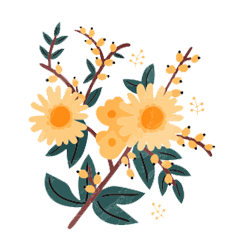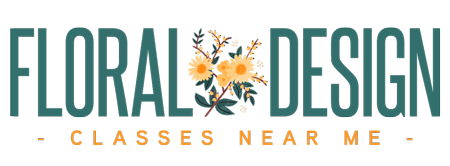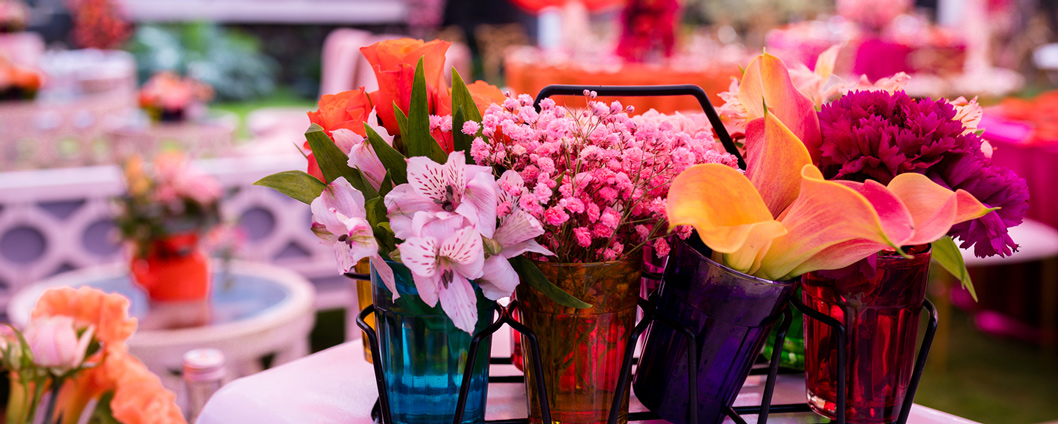Floral Design and Event Styling: How to Integrate Flowers into a Complete Event Look
When it comes to creating unforgettable events, every detail matters. From the invitation to the centerpieces, the choice of colors to the ambiance, every element contributes to the overall aesthetic. Floral design is one of the most impactful elements, adding color, texture, and fragrance to the atmosphere. But the magic happens when floral designers work in tandem with event stylists to create a cohesive, breathtaking design that elevates the event experience.
In this blog, we’ll explore how floral designers can collaborate with event stylists to seamlessly integrate flowers into a complete event look for weddings, galas, corporate events, and more.
1. Understanding the Vision: Collaborative Planning from the Start
The foundation of a successful floral and event design collaboration lies in clear communication. Both the floral designer and event stylist must work together to understand the event’s overall vision, theme, and desired atmosphere. Whether it’s a modern wedding, a lavish gala, or a corporate gathering, it’s essential that both parties align on the following:
-
Event Theme & Concept
The event’s theme plays a major role in guiding the overall design, from the colors to the style. For example, a vintage-inspired wedding might call for soft pastels, delicate blooms like roses, and an antique décor style, while a corporate event might lean toward clean lines, bold colors, and modern flower choices. By understanding the theme, floral designers can select flowers that complement the mood set by the event stylist. -
Color Palette
The color palette is a crucial component that both floral designers and event stylists will need to focus on. Flowers should blend seamlessly with the décor, linens, table settings, and any additional design elements like lighting and furniture. Discussing the color scheme early on allows floral designers to choose flowers that either complement or provide a dynamic contrast, creating harmony and visual interest. -
Ambiance & Mood
What mood do you want to set for the event? Is it romantic and intimate, bright and playful, or luxurious and dramatic? Flowers are a powerful tool in setting the tone. For a soft, romantic mood, delicate flowers like peonies and garden roses in soft hues of blush and ivory are ideal. For a glamorous gala, bold blooms like orchids or dahlias in rich jewel tones can create a striking visual impact. The event stylist can guide the atmosphere with furniture, lighting, and décor, while the floral designer brings that mood to life with flower choices and arrangement styles.
2. Floral Elements as Design Anchors: Where to Integrate Flowers
Flowers can be used in countless ways to enhance the event’s design, and the event stylist and floral designer must decide on key locations to feature floral elements. Here’s how to integrate flowers throughout the event space:
-
Centerpieces
Table centerpieces are one of the most common ways flowers are incorporated into an event. For weddings, the floral designer can work with the event stylist to ensure the centerpieces align with the theme and the table settings. For corporate events, flowers can be used in more sleek, minimalist arrangements that complement the company’s branding or color scheme. Centerpieces can range from small vases with delicate single blooms to grand, opulent displays with a mix of textures and heights. -
Entrance Displays
The entrance of the event is your first opportunity to set the scene. Floral arches, garlands, or statement flower installations can create an unforgettable impression. Event stylists can help frame the space with the right furniture and lighting, while the floral designer can create a lush, welcoming atmosphere with florals that lead guests into the event. A floral arch at the entrance to a wedding or a floral wall for photos can instantly elevate the space. -
Ceremony & Stage Designs
For weddings or corporate events with a stage, floral designs can be integrated as backdrops or accents. Large-scale floral installations like hanging florals or floral walls work wonders as the focal point of a ceremony space or stage. Event stylists can enhance the visual appeal with creative lighting or drapery, while floral designers add texture and dimension with carefully curated blooms. -
Aisles & Walkways
A flower-lined aisle or walkway is a lovely touch that draws guests’ attention and creates a sense of anticipation. The event stylist can work with the layout, ensuring the flowers are positioned for maximum visual impact, while the floral designer can select flowers that complement the space. Flower petals scattered on the ground or in vases placed along the aisle create a soft, romantic effect. -
Lounge & Seating Areas
Flowers can even be incorporated into more unexpected spaces like lounge or seating areas. Flower arrangements can be placed on tables, behind couches, or along shelves. Event stylists may use these spaces to create small, intimate settings that allow guests to relax while still enjoying the beauty of the floral designs.
3. Complementing and Contrasting with Event Décor
One of the keys to a cohesive event design is making sure the floral arrangements complement—and sometimes contrast—effectively with the other décor elements. This is where the collaboration between floral designers and event stylists becomes crucial.
-
Textures & Layers
Event stylists often use fabrics, such as linen, velvet, or silk, in the event’s décor to add texture. Florals can play into these textures by using flowers with contrasting textures, such as soft, delicate blooms paired with rougher, more organic elements like wood or stone. Fabric draping combined with floral arrangements creates depth and layers that add richness to the design. -
Height & Scale
Event designers and floral designers should carefully consider the scale of the event space. Large floral installations work well in expansive venues, but smaller, more intimate spaces might benefit from delicate, understated floral arrangements. Event stylists can help frame the space with furniture and lighting, while floral designers bring the design to life by choosing flowers that balance the scale of the room. -
Seasonality & Local Sourcing
One of the benefits of collaborating is the ability to choose flowers that are both seasonally appropriate and locally sourced. By working together, the floral designer can curate arrangements that are in-season, ensuring fresh blooms that fit the event’s timeline. Event stylists can help incorporate those seasonal flowers into the overall décor by choosing complementary props and colors, whether it’s a rustic fall theme with autumn leaves or a spring event with pastel flowers.
4. Personalization: Adding Unique Floral Touches
Floral design is also an opportunity to bring personal touches into the event. From bouquets to boutonnieres to unique floral details, flowers can reflect the personalities of the hosts or guests of honor. Event stylists can help incorporate these personal details into the overall design by ensuring that the floral elements are consistent with the event’s branding or personal aesthetic.
For example, for a wedding, flowers could be chosen to reflect the couple’s favorite blooms or even their love story, with florals carefully woven throughout the ceremony, reception, and even the favor packaging. For a corporate event, flowers can reflect the company’s branding or values by choosing colors and blooms that align with the company’s identity.
5. The Final Touch: Coordinated Design Execution
On the day of the event, the florist and event stylist must work closely to ensure that everything comes together seamlessly. The floral designer is responsible for the placement, arrangement, and final touches of the flowers, while the event stylist ensures that all décor elements are coordinated and set in their designated spots. The collaboration doesn’t end at the planning stage—it’s essential that both designers stay in constant communication during setup to troubleshoot any last-minute changes and ensure that the space is ready to wow guests.
Floral design and event styling go hand in hand when creating a truly memorable event. The right flowers can set the tone, add visual interest, and tie together various design elements. By collaborating closely, floral designers and event stylists can create cohesive, visually stunning events, from weddings to galas to corporate affairs. With thoughtful planning, communication, and creativity, flowers can enhance any event, making it not just beautiful, but also uniquely meaningful.




